
Historic Pickwick Mill / Pickwick Mill Inc.
Winona Co. | Minnesota | USA
Watersource: Big Trout Creek.
Historic Pickwick Mill / Pickwick Mill Inc.
Located two miles south of US 61/US 14 in beautiful southeastern Minnesota on County Road 7 at Twp. Road 8 in Pickwick, MN, ten miles southeast of Winona, Mn.

The restored 1856 Pickwick Mill with Lake LaBelle/the mill pond, through which Big Trout Creek flows. George W.T. Grant was assisted by Wilson Davis and his father, Timothy, in building the mill at the falls on Big Trout Creek in 1856-finishing the project in 1858.
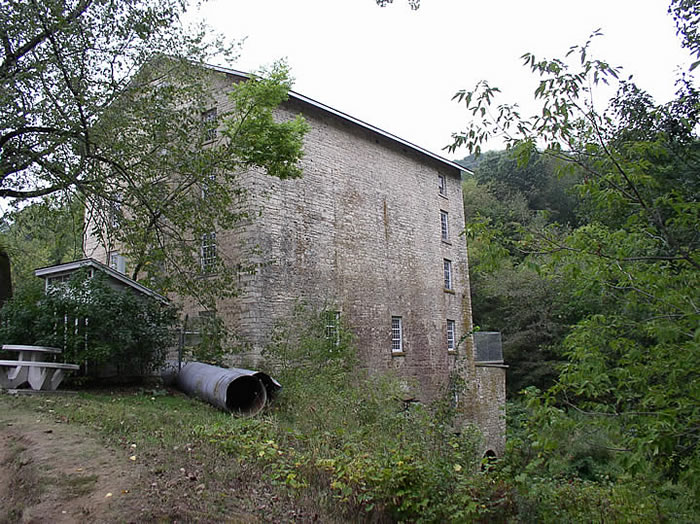
The 60'X 45' mill, 6 stories in height, of locally quarried limestone, was built as a merchant or commercial mill. That is, it produced flour mainly for distant markets and did not, as a rule, grind for the local farmers.
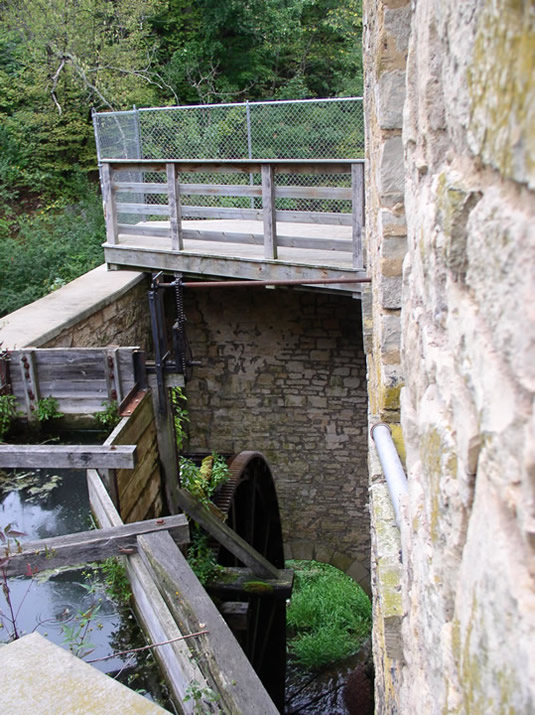
The mill originally used French buhrs that were located outside of the mill and powered by an overshot wheel. The mill today continues to use French buhrs, inside of the mill, turned by a 4'X 20' overshot wheel. Neither the stones nor the wheel are original, however. The original stones have been retired and are on display in the mill.
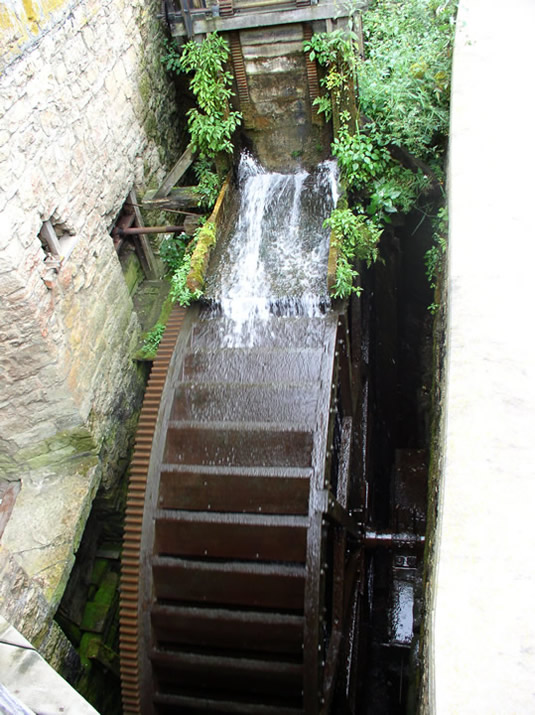
The interior framework of the mill, cut and sawn locally, are notched and fitted together-held by wooden pegs. No nails were used except in the flooring. At its peak, the mill produced a sustained 100 barrels of flour/day. Local farmers were paid to transport the flour by wagon to LaMoille, downstream along Trout Creek to the Mississippi River. There it was shipped by boat and later by rail, to eastern cities, South America, Europe, and other ports-of-call.
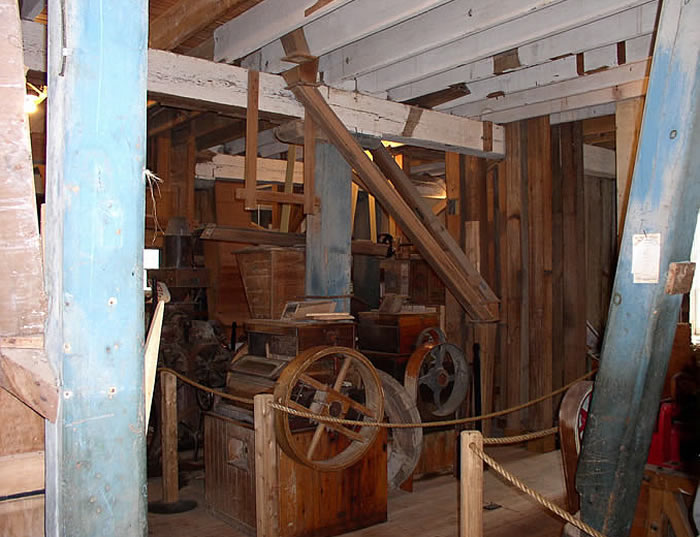
Some roller mills surrounded by wooden grain chutes and elevators. The last several decades of the 19th century saw a revolution in the flour industry. The "New Process" or roller mill process permitted for the production of finer, whiter flour faster, resulting in greater overall production.
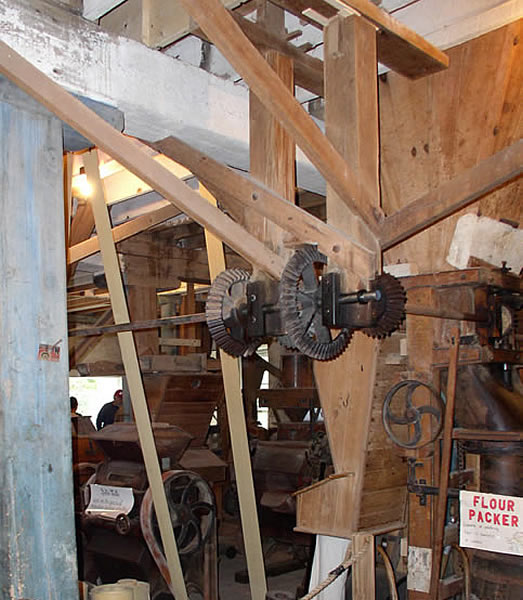
Another photo showing the roller mills, lineshafts, gearing, belts and a flour packer. The mill is unique in that it has the equipment/machinery traversing both the old stone ground production method and also the roller mill method. The double turbine that replaced the first wooden waterwheel is also on display.
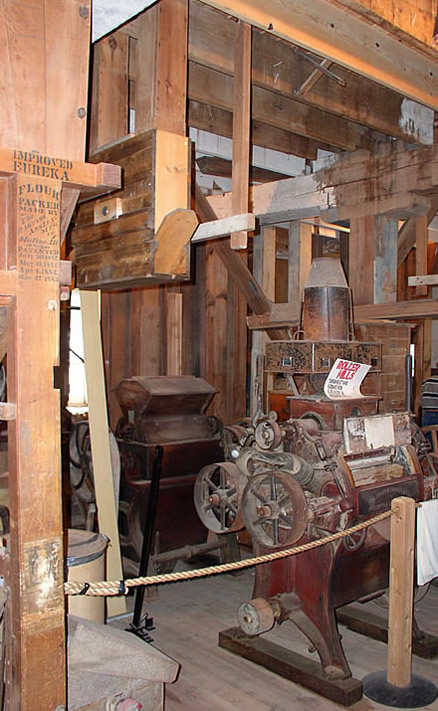
Still another view of roller mills and the stamped product name of the Eureka flour packer on the packers supporting framework. The Improved Eureka Flour Packer, made by Barnard & Lea Manufacturing Co. in Moline, Illinois uses a counter-weighted scale system, automatically loading a preselected weight of flour into containers or sacks.
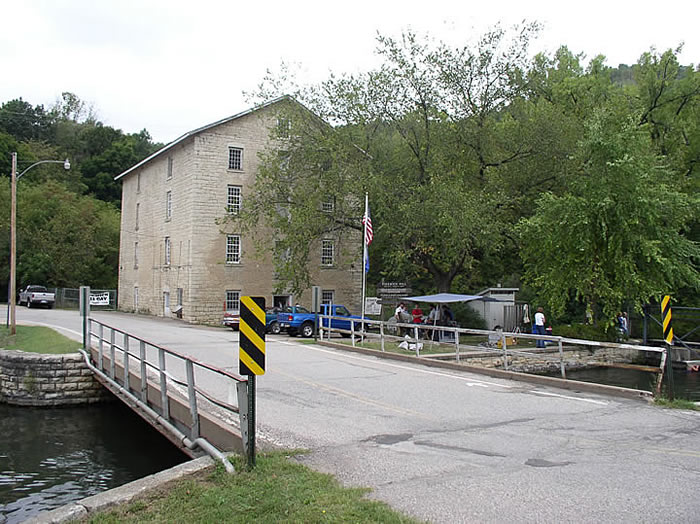
The mill during one of the annual Mill Days, held each fall, the second Saturday in September. The mill has fully operational millstones, a 4ft x 20 ft water wheel, 6 floors of original machinery, a nearby restaurant with a view of falls, trout fishing, hiking, biking, picnic sites, playground, Lake Labelle. Open for buses and groups by appointment. Ask for Vic Gardner. Call for days when the full machinery can run. Open to the public weekends: 9-5 May, Sept and Oct & weekdays Tue-Sun: June, July, and Aug. Admission is charged.

The mill with the outlet to Lake LaBelle again becoming Big Trout Creek, tumbling over the falls. A railed pedestrian footbridge is above the falls and the County Highway 7 bridge is in the background.
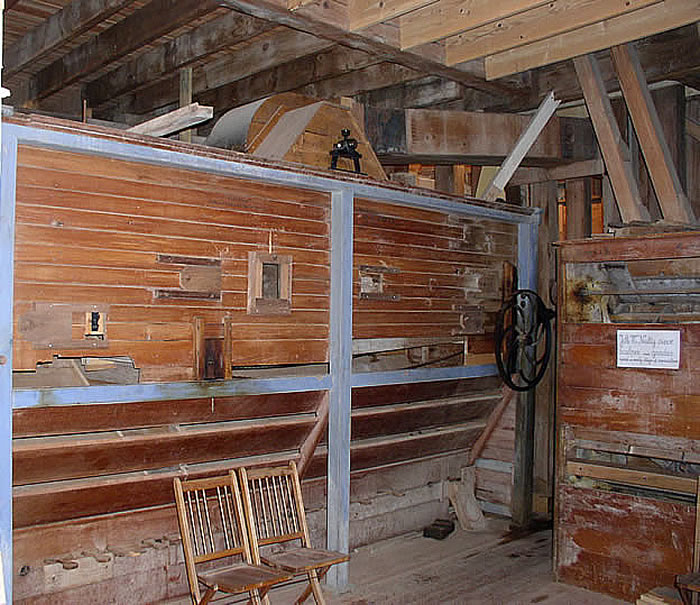
a photo of a flour dresser and possibly a flour sifter on the right. The mill produced flour and later livestock feed for about 120 years, from 1858-1978. Big Trout Creek Valley suffered a major flood in 1980, destroying for all practicle purposes, the dam & spillway and causing a great amount of water damage to the flume, wheel & lower portions of the mill structure.
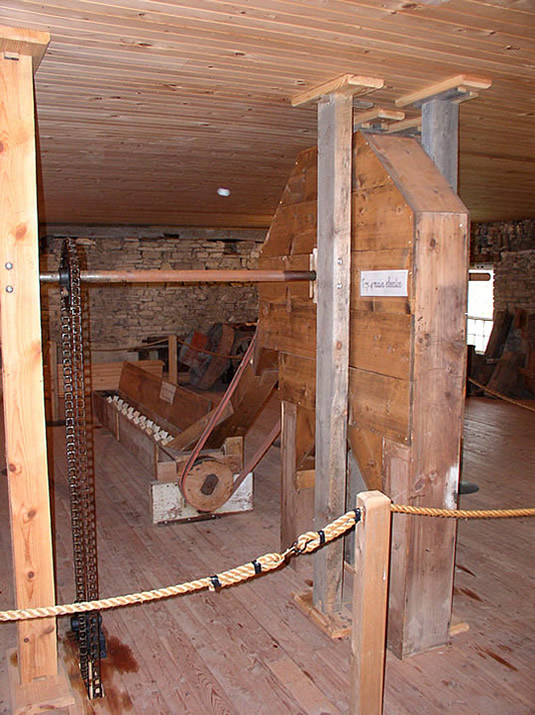
A wooden-toothed screw auger and a bucket grain elevator on the photo. The mill operations, which had ceased two years prior, were now surely forever doomed, with consideration being given to razing the structure. The mill was purchased in 1982 by a community formed "friends group", the Pickwick Mill Association. The Association and other volunteers worked together many hours and years to restore the mill and the surrounding area.
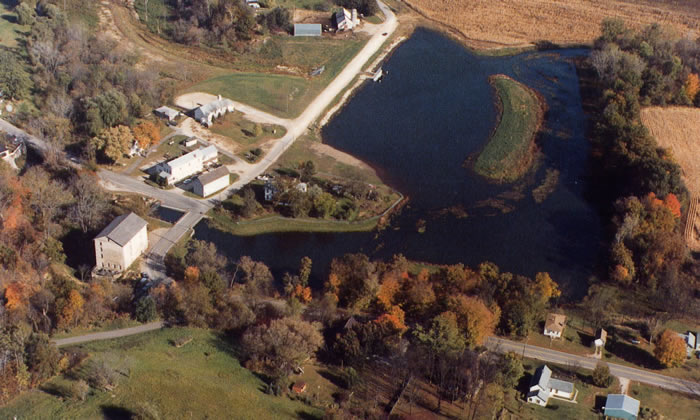
The mill from an aerial photo, date and photographer unknown. The mill operated in September 2004 for the annual mill day to celebrate the mills 150th anniversary of the mills original inception by G.W.T. Grant in 1854. Thanks to Asso. board member, Loretta Davis (any relation to Wilson Davis, one of the original builders?)and the board of directors for permission to use information and photos from Pickwickmill.org for this webpage on the Pickwick Mill. GPS: -95' 29.49W, 43' 58.50N